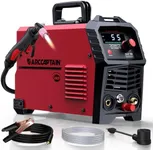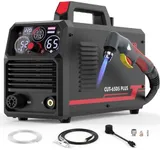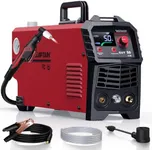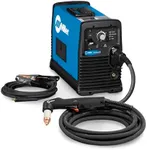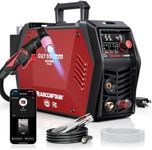Buying Guide for the Best Plasma Cutters
Choosing a plasma cutter can seem overwhelming, but breaking it down into a handful of key features makes the decision a lot easier. Think about what type of materials you’ll be cutting, how thick those materials are, and where you’ll use the cutter (shop or field). It’s also helpful to consider your level of experience and how frequently you’ll be using the tool. Knowing these things will help you match up your needs with the features that matter most.Cutting Capacity (Thickness)Cutting capacity tells you the maximum thickness of material (like steel or aluminum) a plasma cutter can handle effectively. This is crucial because if you regularly cut thick materials, you need a machine that can do the job smoothly and safely. Plasma cutters are usually categorized by their rated cut, clean cut, and severance cut thickness. For light, hobby or auto body use, a lower capacity (say, around 1/4 inch) is often enough. For regular cutting of structural metals or repair work, you'll want something that reliably cuts through 1/2 inch or more. Assess the materials you plan to cut most often and choose a plasma cutter that exceeds that thickness for a bit of extra capability.
Input Power (Voltage)Input power refers to the type of electrical connection the plasma cutter requires, usually 110/120V or 220/240V. Lower voltage (110/120V) models can plug into standard household outlets, which is convenient for light or home use but may limit cutting power. Higher voltage (220/240V) units draw more power, enabling greater cutting ability, which is suited for tougher or thicker jobs. Some plasma cutters can switch between both voltages, offering flexibility. Your choice should depend on the thickness you need to cut and what type of power outlets are available where you’ll use the cutter.
Air Supply RequirementsA plasma cutter operates by forcing compressed air through a nozzle to create the cutting arc. Some cutters have built-in air compressors, while others require an external compressor. Built-in units are more portable and convenient for occasional or light work, but might not provide enough airflow for heavy use. External compressor setups offer higher performance and are more suitable for frequent or industrial tasks, but require you to have (or buy) a separate compressor. Think about where and how you’ll use your plasma cutter—if you value portability and simplicity, built-in may be ideal; if you need high-duty use, an external compressor gives more power.
Duty CycleDuty cycle is how much time, within a ten-minute period, a plasma cutter can operate before needing to cool down. For example, a 60% duty cycle at full load means you can cut for 6 minutes and must let it rest for 4 minutes. A higher duty cycle is better if you need to do longer or more frequent cuts, such as in repair shops or for fabrication jobs. For occasional or short jobs, a lower duty cycle is usually sufficient. Assess how long and how often you'll be making continuous cuts to figure out the duty cycle you need.
PortabilityPortability refers to the weight and size of the plasma cutter, which matters if you need to move it between job sites, around a shop, or even for storage. Lightweight, compact models are easier to carry or move, making them good for on-site repairs or if you don’t have a fixed workspace. Larger, heavier units may offer more power but are better suited for stationary tasks in a workshop. Consider how often you’ll need to transport the cutter and whether portability outweighs the benefits of a bigger, more powerful machine.
Pilot Arc FeatureA pilot arc allows the plasma cutter to start cutting without directly touching the tip to the metal. This is especially useful when you’re working with painted, rusty, or expanded metal, and it helps extend the life of the cutting tip. If you plan on frequently working with dirty or uneven surfaces, or need to make precise cuts in mesh or grates, investing in a model with a pilot arc is worthwhile. If your work usually involves clean, flat material, this feature may be less essential but still convenient.
![ARCCAPTAIN iControl [Non-HF] Plasma](https://images-proxy.bestreviews.guide/QTFoY7QmK1y6E8I5_6quXgJRb0o=/0x150/https://m.media-amazon.com/images/I/51hLye1tq1L._AC_CX679_.jpg)

